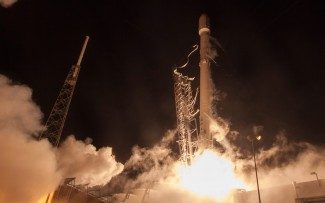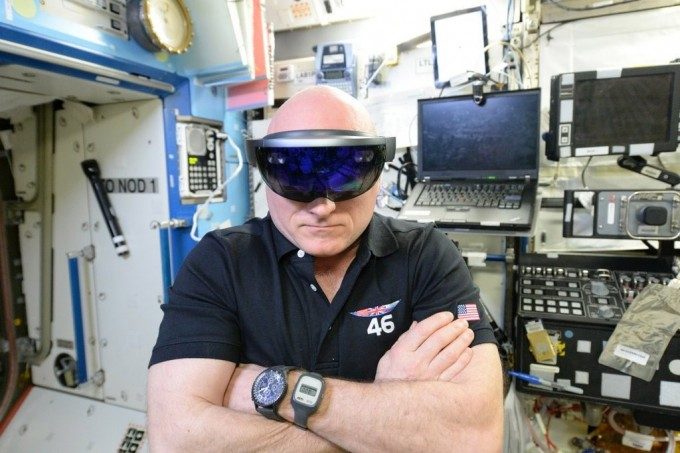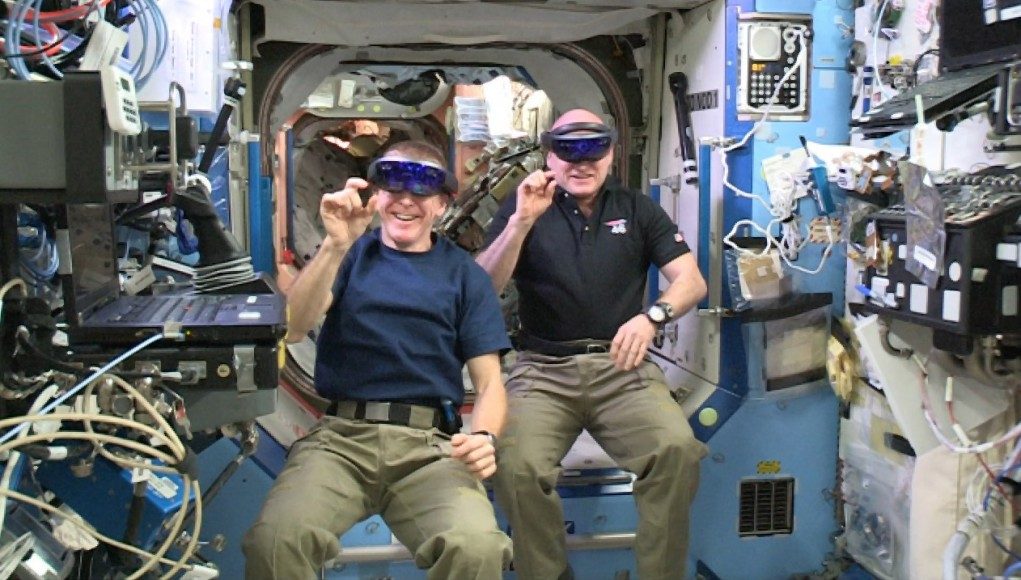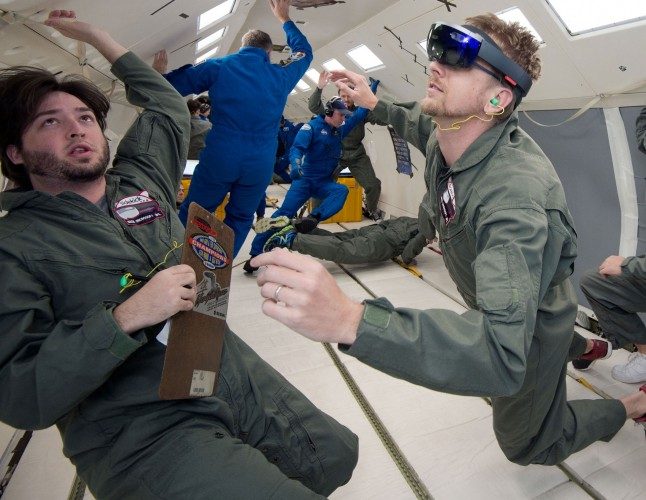NASA has been quite active in experimenting with the latest AR and VR technology to explore how it might be useful for space exploration. They have several ongoing collaborations with Microsoft’s HoloLens, including ‘Project Sidekick’ which aims to aid astronauts aboard the International Space Station.

Two of Microsoft’s HoloLens AR headsets were part of the SpaceX CRS-7 resupply payload which was scheduled for launch last June. The unmanned ‘Dragon’ spacecraft suffered a critical failure shortly after liftoff, destroying the vehicle and cargo entirely. And while the astronauts aboard the ISS had plenty of supplies to last them until the next resupply mission, they wouldn’t be seeing HoloLens any time soon.
Two new HoloLens headsets were loaded aboard the Cygnus CRS-4 ISS resupply mission which was due to launch on December 3rd. The mission had to be aborted three times duo to unfavorable launch weather, but the launch proceeded successfully on December 6th and the craft docked with the ISS on the 9th.

Today we saw the first pictures of astronauts aboard the ISS giving HoloLens a try (perhaps they were buried under quite a bit of other cargo).
See Also: How NASA is Using VR to Explore the Universe
Aside from some pretty solid publicity for Microsoft, HoloLens is onboard the ISS as part of Project Sidekick which is designed to aid ISS astronauts, according to NASA:
Sidekick has two modes of operation. The first is “Remote Expert Mode,” which uses Skype, part of Microsoft, to allow a ground operator to see what a crew member sees, provide real-time guidance, and draw annotations into the crew member’s environment to coach him or her through a task. Until now, crew members have relied on written and voice instructions when performing complex repair tasks or experiments.
The second mode is “Procedure Mode,” which augments standalone procedures with animated holographic illustrations displayed on top of the objects with which the crew is interacting. This capability could lessen the amount of training that future crews will require and could be an invaluable resource for missions deep into our solar system, where communication delays complicate difficult operations.
Prior to liftoff, Microsoft took HoloLens aboard NASA’s ‘Weightless Wonder C9’ aircraft to ensure the device would operate in the zero-G environment of space.
While the current experimental usage of HoloLens aboard the ISS today is interesting, further AR capabilities in the future could have major ramifications for spaceflight, not the least of which could be the ability for astronauts on lengthy missions to have ‘holographic’ calls, making it feel as if friends and family are right there with them. This may be essential to the wellbeing of astronauts making the six month journey to Mars, which NASA plans to attempt in the 2030s.
See Also: NASA Looks to PlayStation VR to Solve Key Challenge of Space Robot Operation








